Every year, winter causes problems for residents of single-family houses - properties are covered with snow, sidewalks are slippery, and the frozen garage door cannot be opened. After all, such situations should not be a problem nowadays.
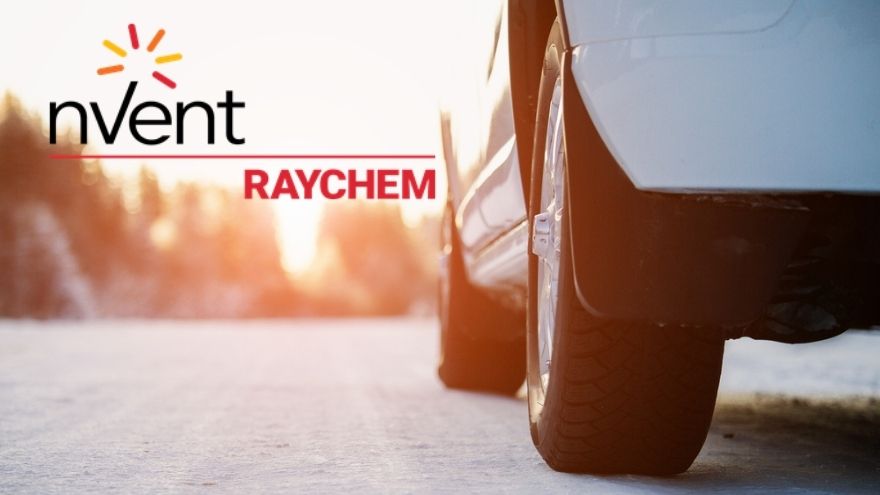
There is a way to do this - electric heating cables!
An effective and maintenance-free method of maintaining the surface of sidewalks, driveways and passages in a condition that ensures safe movement is the use of electric heating cables. A properly designed and constructed anti-icing system guarantees the safety of road and pedestrian traffic, reduces the costs of repairing surface damage caused by freezing water, saves energy and time on removing ice, and protects the environment against the use of defrosting substances.
Benefits of using heating cables outdoors:
- permanent, 24/7 access to the building,
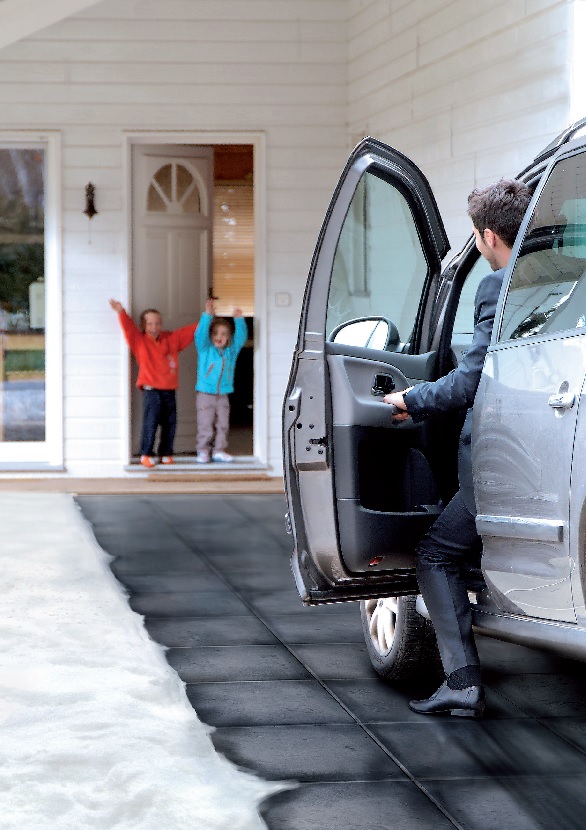
- roads are cleared of snow "by themselves" - the system eliminates the need for manual snow removal,
- limiting snow removal time - the system prevents the formation of snowdrifts,
- low system costs – the system only works when it snows; thanks to the use of controllers, the heating system turns on when the temperature drops below the programmed value and there is rainfall at the same time
atmospheric, - protection of the environment, our shoes and our pets' paws - we do not have to use salt or chemicals.
Check out the nVent RAYCHEM brand zone in the Onninen wholesaler
Electric heating of external surfaces – how much does it really cost?
Constantly rising electricity prices contribute to the common opinion that the use of electrical systems must be expensive. Nothing could be further from the truth. Let's calculate this using the example of the operating costs of an average driveway with an area of 20 m². The annual cost of operating a heating system with a power of 300 W/m² , assuming that it will work for 150 hours (this is the average snowfall in our latitude), using a controller, is PLN 400. Comparing this with the labor input, costs of tools, chemicals and remuneration of employees employed to clear snow - this is a price lower than the actual costs incurred in the winter season. Icy roads and sidewalks can cause accidents and damage that will significantly exceed the costs of electric heating. In the face of increasingly higher standards of maintaining external surfaces in winter, the use of electrical systems is no longer a luxury and has become common in multi-family and single-family buildings.
Which heating cable system should I choose?
The heating system should be selected depending on the type of surface and its purpose.
Asphalt driveways - choose high-temperature heating cables with mineral insulation
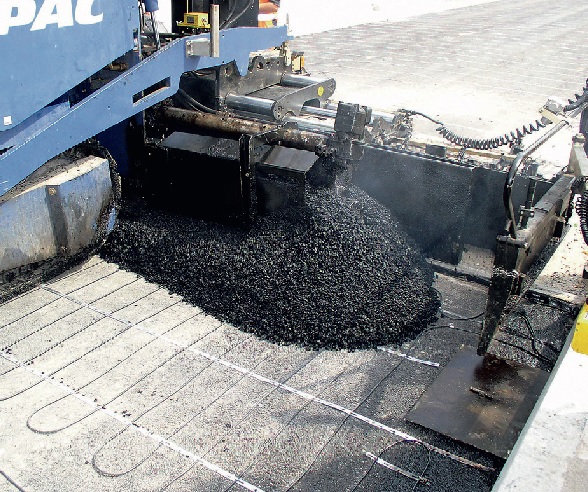 Yes – there are cables that can be laid in hot asphalt – these are nVent RAYCHEM EM-MI high-temperature mineral-insulated heating cables. No other heating cable is so resistant to high temperatures and damage during installation. The cables are available in sets from 1270 W to 4290 W, which can be easily adapted to irregularly shaped surfaces. Factory terminated heating cables do not require terminations or cold leads during installation and can be attached to existing reinforcement or spacer strips.
Yes – there are cables that can be laid in hot asphalt – these are nVent RAYCHEM EM-MI high-temperature mineral-insulated heating cables. No other heating cable is so resistant to high temperatures and damage during installation. The cables are available in sets from 1270 W to 4290 W, which can be easily adapted to irregularly shaped surfaces. Factory terminated heating cables do not require terminations or cold leads during installation and can be attached to existing reinforcement or spacer strips.
Driveways, sidewalks and stairs made of concrete and covered with paving stones - choose constant resistance cables
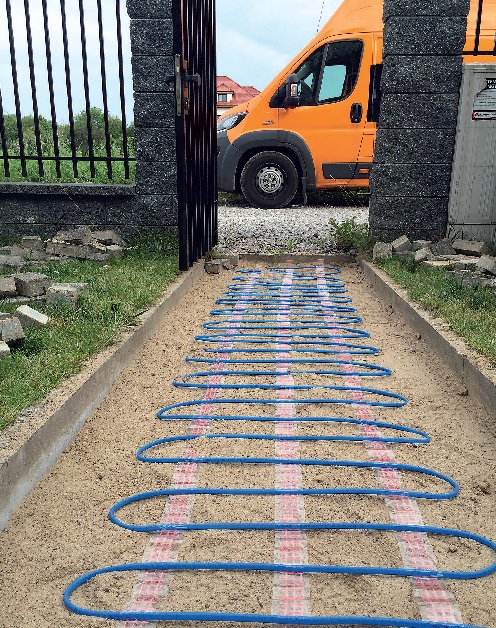 In this case, it will be optimal to use constant resistance cables
In this case, it will be optimal to use constant resistance cables
nVent RAYCHEM EM4-CW and nVent RAYCHEM EM2-CM mat. This is the most economical solution, characterized by simplicity and short installation time. Standard heating mats with a power of 300 W/m² and a width of 60 cm will be good for clearing snow from sidewalks and road lanes. They can be rolled out immediately before pouring the concrete. Factory-terminated constant resistance heating cables with a power of 25 W/m are laid on stairs, complex and irregularly shaped surfaces. The 2-wire cable design means only one cold wire that needs to be connected to the power supply and controller. Constant resistance solutions are most often used in single-family construction due to low purchase costs and economical operation.
Check out the heating cables at the Onninen wholesaler now
Concrete, reinforced loading ramps - invest in a mechanical self-regulating cable
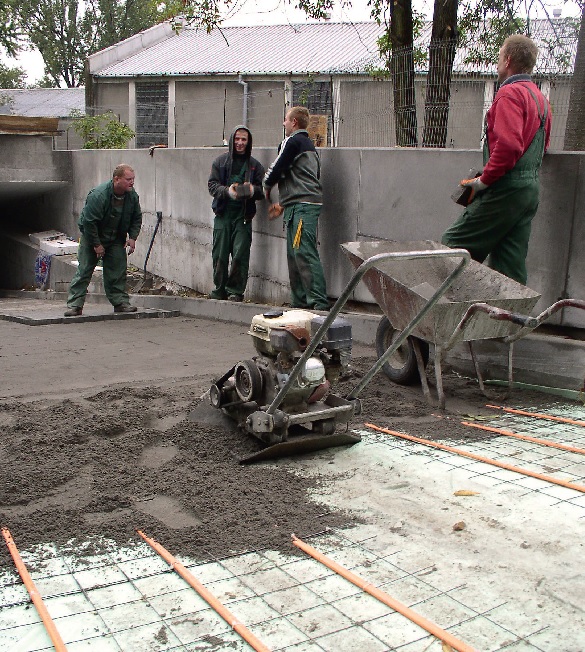 In places with particular traffic intensity - in parking lots, loading ramps, entrances to underground parking lots, and even on helipads and airports - nVent RAYCHEM EM2-XR self-regulating cables (300 W/m², 90 W) are used, which are durable and resistant to mechanical damage. /m at 0°C). Thanks to self-regulation technology, these cables maintain the required temperature along the entire length of the heating circuit. They are very safe - they do not overheat even at the point of crossing. Self-regulating ducts are the most frequently chosen system for large projects and investments where installation takes place in concrete. By using the nVent RAYCHEM VIA-DU20 controller, the entire system can save up to 80% of energy.
In places with particular traffic intensity - in parking lots, loading ramps, entrances to underground parking lots, and even on helipads and airports - nVent RAYCHEM EM2-XR self-regulating cables (300 W/m², 90 W) are used, which are durable and resistant to mechanical damage. /m at 0°C). Thanks to self-regulation technology, these cables maintain the required temperature along the entire length of the heating circuit. They are very safe - they do not overheat even at the point of crossing. Self-regulating ducts are the most frequently chosen system for large projects and investments where installation takes place in concrete. By using the nVent RAYCHEM VIA-DU20 controller, the entire system can save up to 80% of energy.
The controller can also be factory-built into the nVent RAYCHEM SBS-xx-VV-20 power supply and control switchgear, enabling power supply to up to 12 heating circuits.
To sum up - electric heating of external surfaces is a convenience that we can afford, and in the rich offer available on the market - everyone will find a system suitable for their requirements and needs. Therefore, this solution, so popular in countries with harsh winters, is also quickly adopted in our country.
